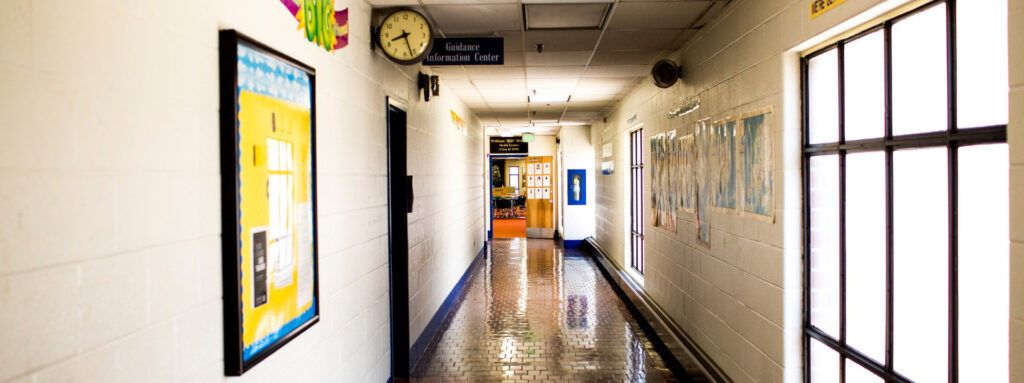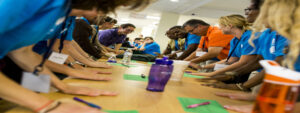This year, we are working to put ourselves out of a job. Huh?
A US Department of Education grant gave us the chance to work with several districts across the country to create or improve their in-district, alternative teacher certification programs, using what we’ve learned from two decades of TNTP Teaching Fellows. The goal was to support these districts to develop programs that allow them to train teachers who meet their needs. In other words, we set out to build district capacity so that eventually they won’t need us at all.
This was a unique opportunity for both sides: We got to learn from our partner districts about how to develop a training program that is truly tailored to a particular context; and the districts got to take advantage of our experience creating new pathways into the classroom for promising candidates, articulating visions of great instruction, and identifying the skills new teachers need to create inclusive, culturally responsive classrooms.
This is incredibly challenging work, though. Some of the toughest challenges were around doing such complex work under such tight timelines. Here are a few of the big lessons we’re taking into year two:
Balance urgency with opportunities for authentic engagement. In our first year, time constraints challenged our ability to engage district partners in a truly organic design process. The teacher training curriculum, for example, was written by us for the first year. District staff sat through many hours of meetings and were provided long, detailed, and complex documents to review, but they didn’t have the chance to independently draft ideas as much as we would have liked.
It’s difficult to balance district partners’ busy schedules with a design process, so for many of them, it was not until they saw pre-service training in action that they truly understood our teacher prep approach and voiced concerns or shared feedback. At one site, a partner noticed the program relied heavily on specific classroom management techniques that, as a district, they wanted to steer away from. Had we involved them more in the design process, this would have come to light sooner.
Design a program that meets each district’s unique needs. In a perfect world, we would have preferred to start with a blank slate and focus on each district’s needs and priorities as the starting point, instead of relying heavily on the model we already know through our Teaching Fellows programs. But since we received funding while the school year was already underway, we had to act quickly to launch in year one.
To manage this, we approached the work by adapting our teacher training model to each district’s context. But that doesn’t exactly live up to the goal. Helping districts develop models that best fit their needs takes real time, but it’s useful time spent because we’ll be building a program based on the district’s values and goals for teacher prep. What kinds of teachers do they need most? What matters to the families in their community? What are the most salient challenges currently facing their students?
At the end of the day, the goal isn’t a perfect model, because there’s no such thing. It’s a model that increases the number of great teachers for students in that particular district.
Despite the challenges of this launch year, we’re still committed to our larger goal and believe the work so far provides us with important learning opportunities—and important progress for our partners. Take Dallas Independent School District, for example. Because Dallas already had an in-house training program in place, we were able to get more done in year one than we would have otherwise. There are promising signs that the collaboration is going well.
Karry Chapman, Dallas’ Chief of Human Capital Management, says the process has introduced new and promising strategies for training their teachers: “We were able to try a new approach to pre-service training that focused on providing practical feedback,” she says. “We are pleased with the positive difference this made on day one in the classroom and the change was acknowledged by our teachers—satisfaction during summer pre-service training almost doubled from 2015 to 2016.”
Over the years, we’ve had a lot of practice developing strong pipelines that identify and prepare new teachers. But now we’re learning more about how to help districts that want to create and own programs that continue to meet their needs long after we leave. That’s new territory for us—and we’ll continue to have missteps (and successes) to learn from—but we’re excited about where the journey might take us.





